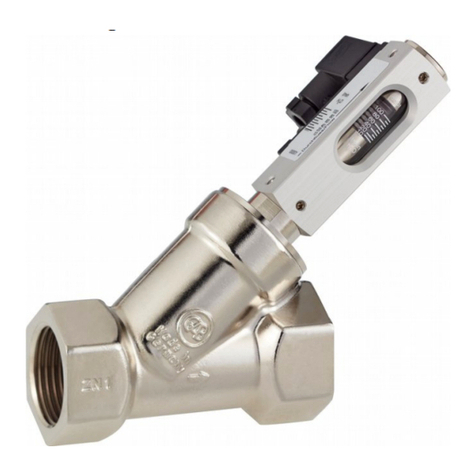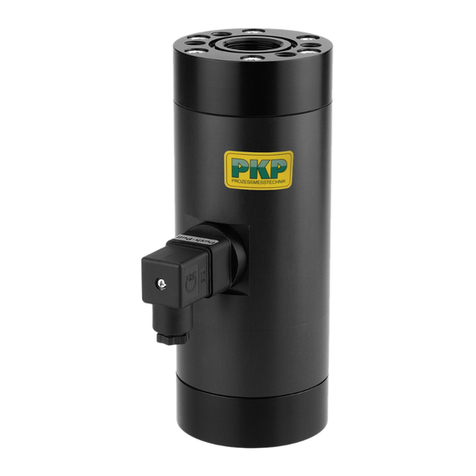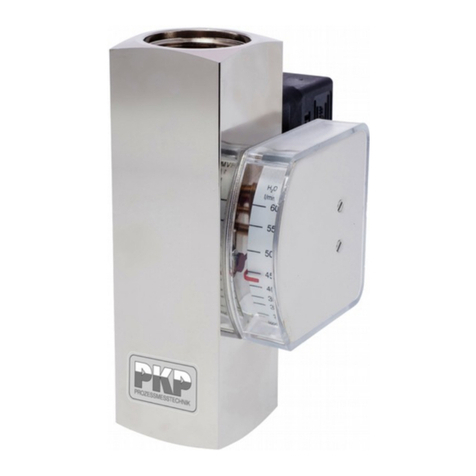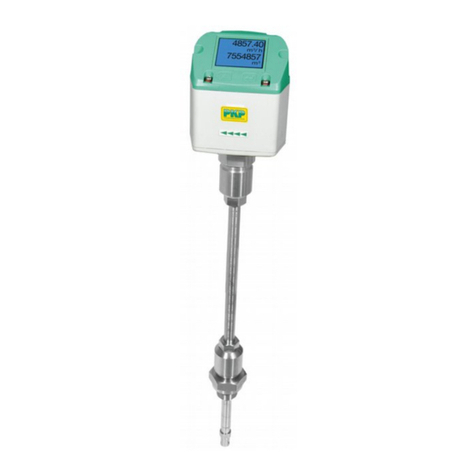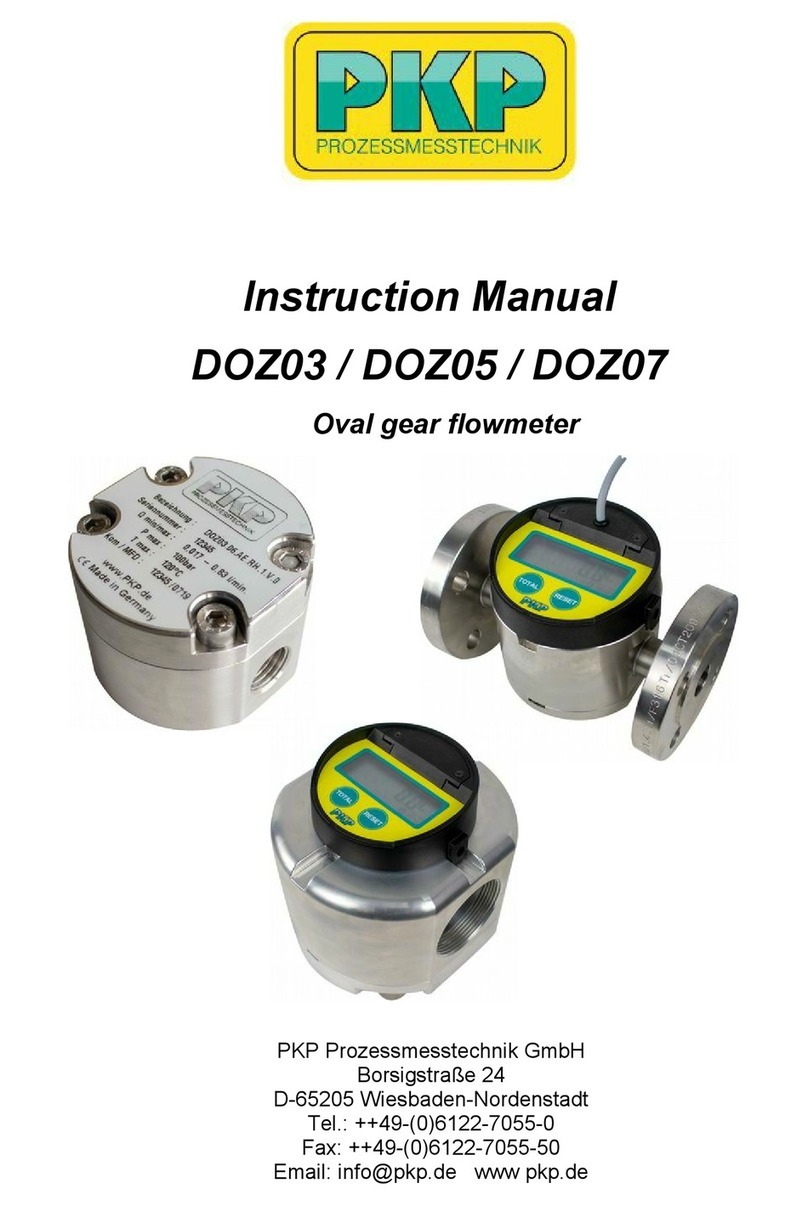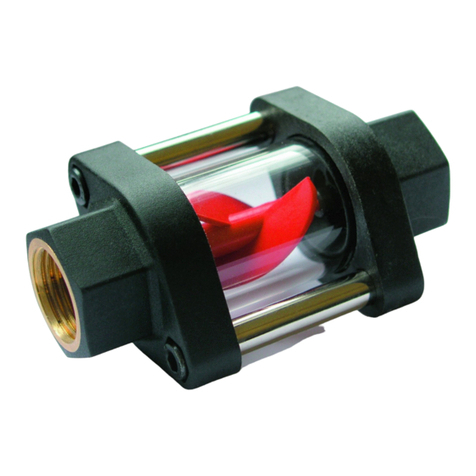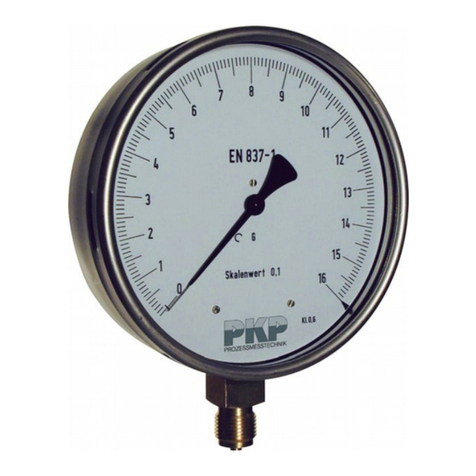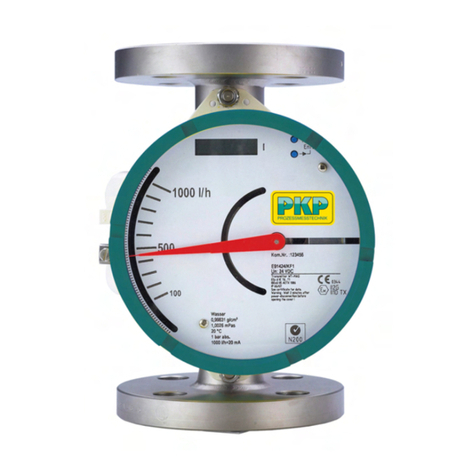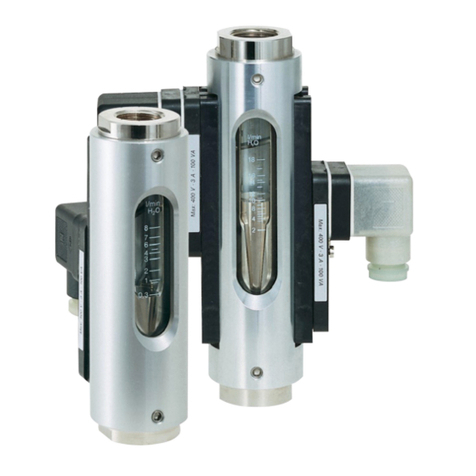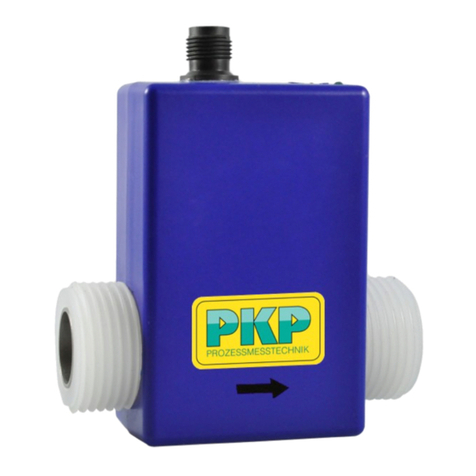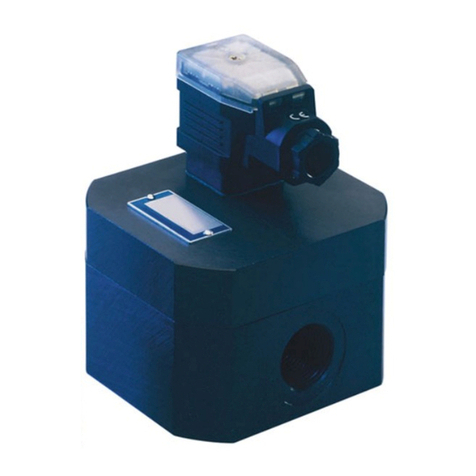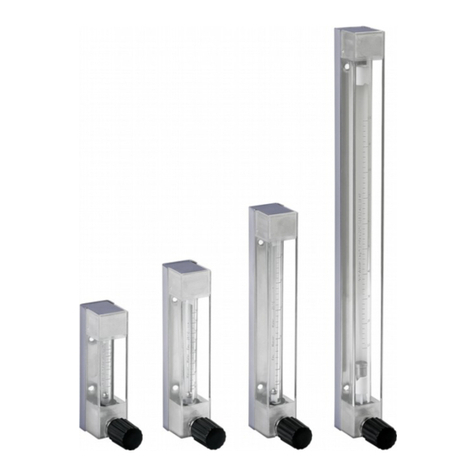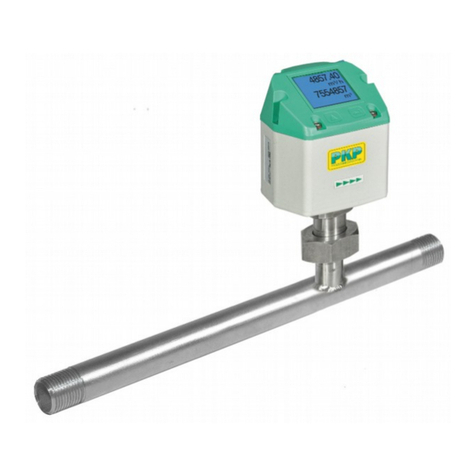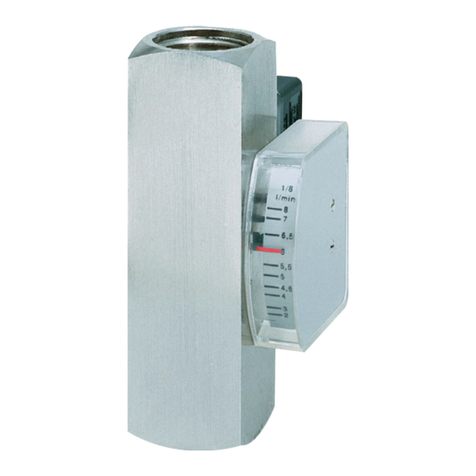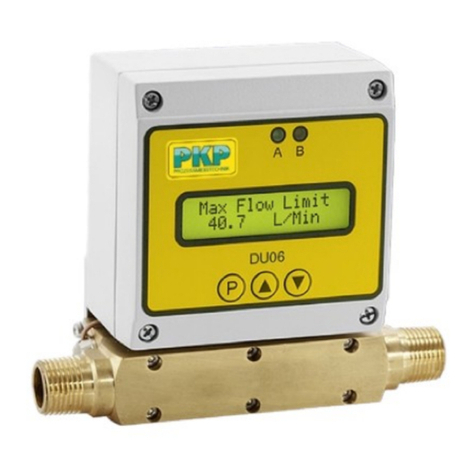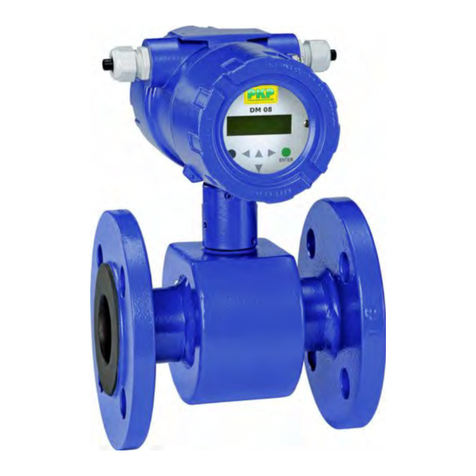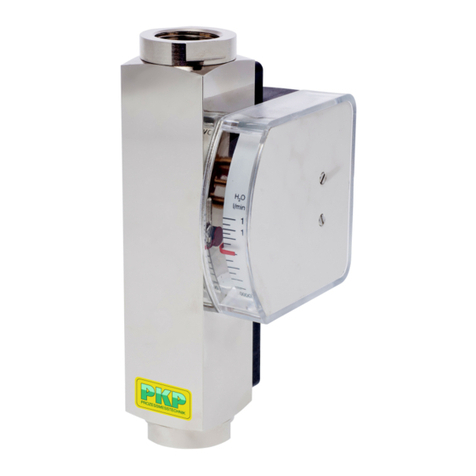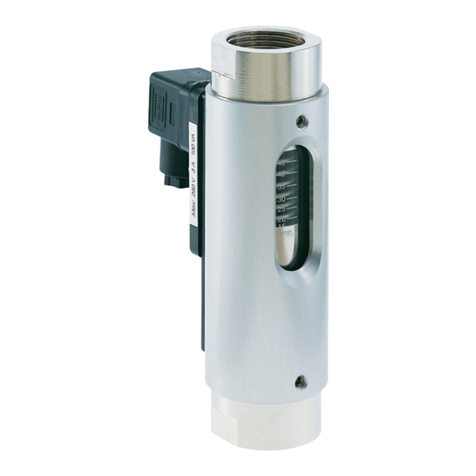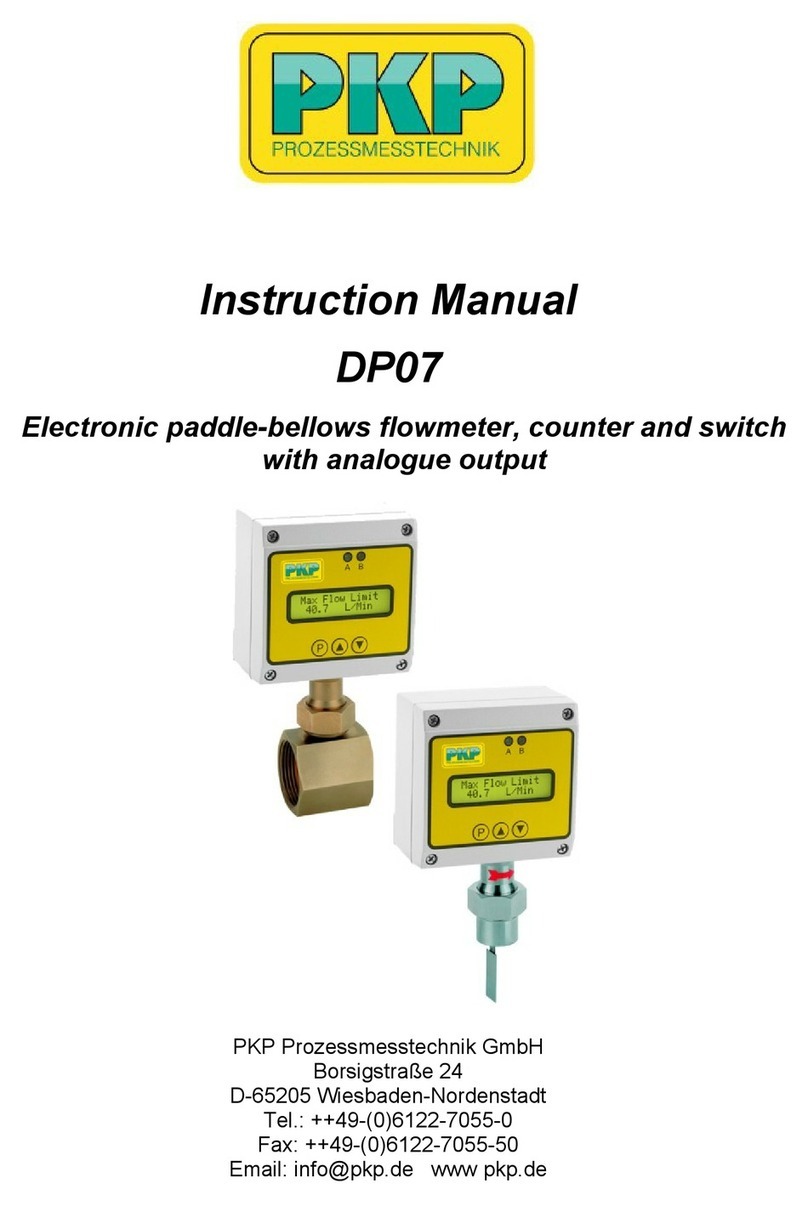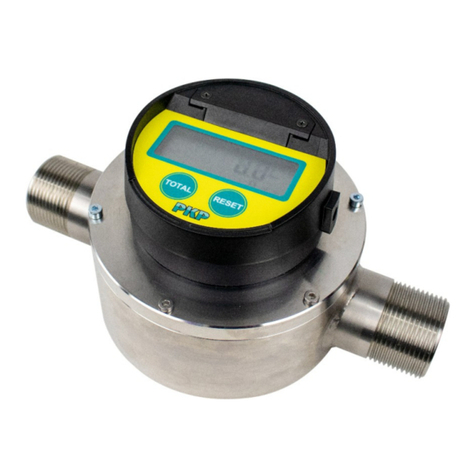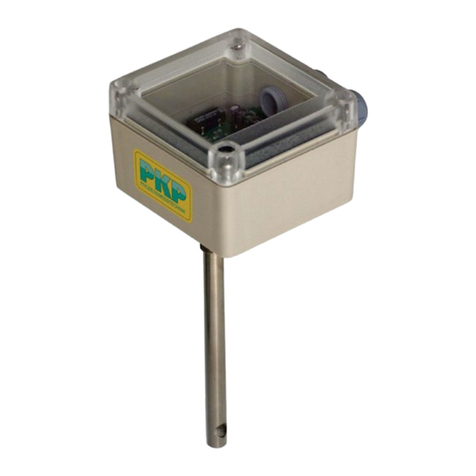Manual Version Page
DB04A EN A1-9 PKP Prozessmesstechni 07
1. Introduction
Thank you for choosing devices from the DB04A series. These operating instructions will help you
to install and operate the measuring devices. Please read through these instructions carefully
before installing the devices. Our aim has been to write a full and practical guide. We would be
grateful if you would notify us of any shortcomings or mistakes.
Please contact PKP if you have questions about any aspect of the products.
The DB04A is a thermal based mass flow meter that can measure the mass flow of gases. The
core element of the DB04A thermal mass flow meter is a CMOS sensor chip. The sensor and parts
of the electronics are on one board and offer a number of advantages for the user.
1.10. Features of DB04A thermal mass flow meters
In developing and manufacturing the devices, we have focused primarily on customers and their
applications. Our aim is to implement customers' requirements in the form of new developments or
enhancements on an ongoing basis. The essential features are:
Compact design
Battery operated optional (Portable)
Dot-matri LCD touch screen
Multiple gases possible (3 gases)
Fle ible due to the many different settings accessible through the touch screen
Back-light screen in USB and 12-30 Vdc power mode
Power also possible with USB micro-B connector or e ternal 12-30 Vdc (Separate module)
Optional alarm module with power, 3 contacts and 2 inputs
Display can be rotated 180 degrees
Fast and accurate measurement and control
Integrated temperature compensation and flow totalizer (standard)
Easy to maintain and service
Firmware upgradable through USB connection
3-year warranty
1.11. Scope of warranty
Warranty for the DB04A product line e tends to material and manufacturing defects only.
Ma imum warranty covers product replacement free of charge. The following causes of
faults/damage are not covered under warranty:
Use outside the operating limits
Damage due to corrosion
Damage due to leaking batteries
Mechanical damage in general
Contamination due to improper sealing
Contamination due to impure gases or penetration of liquids
Damage to electronic components due by over-voltage or electrostatic discharges, and
corrosion damage due to aggressive environments.
Functional failure due to incorrect operation or faulty parameterization
If the unit has been opened or otherwise tempered with.
Drift in the calibration












